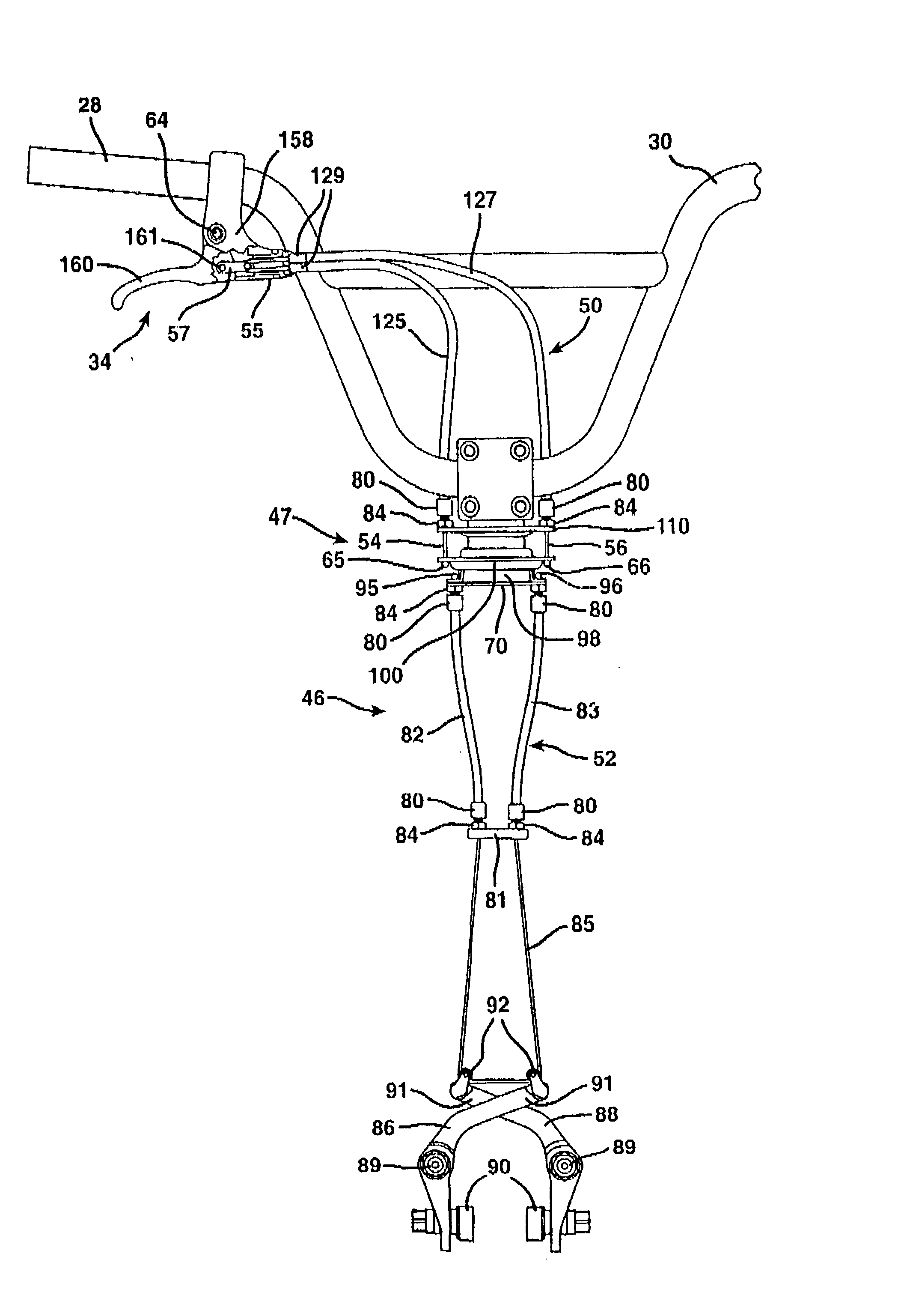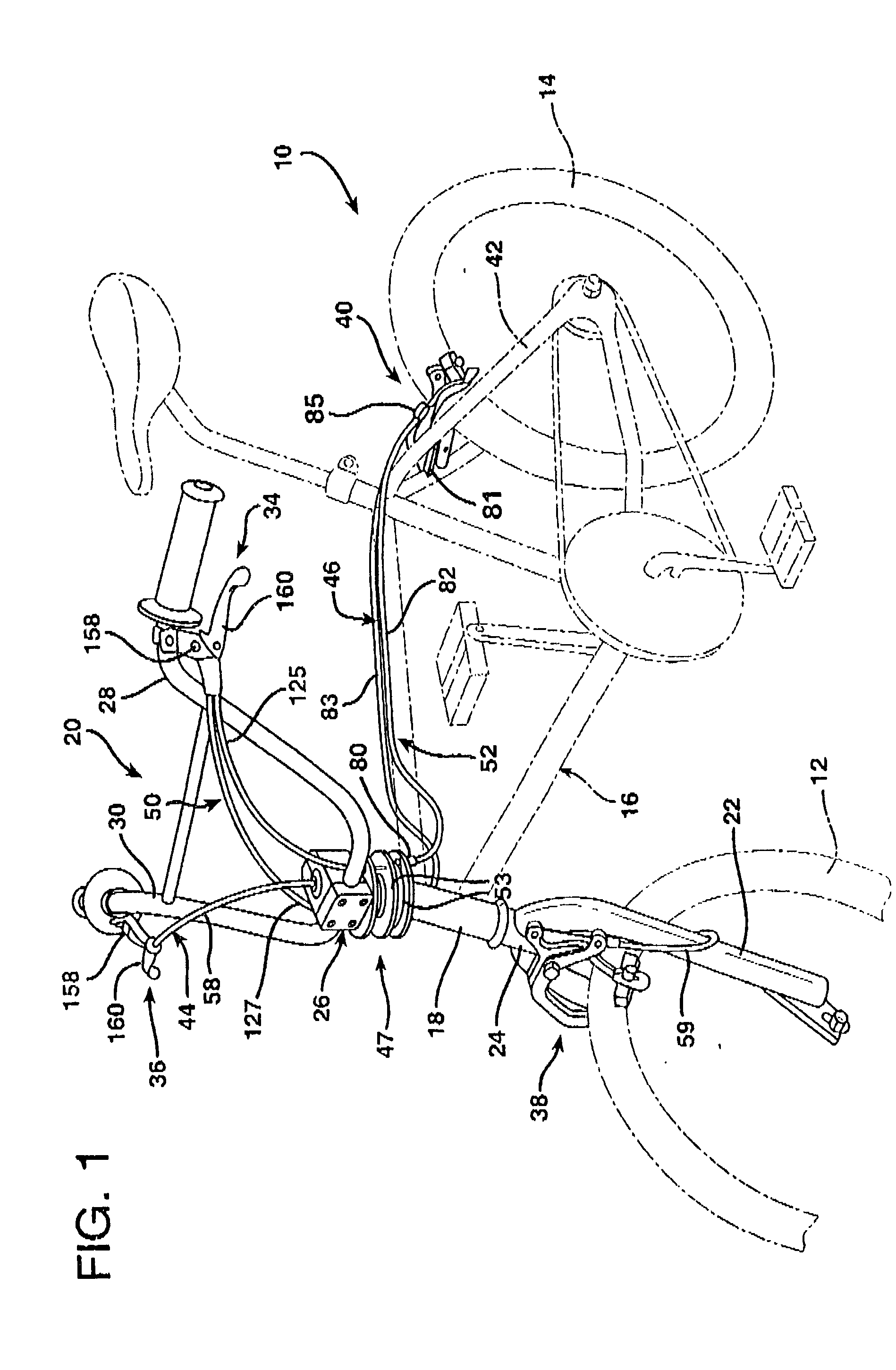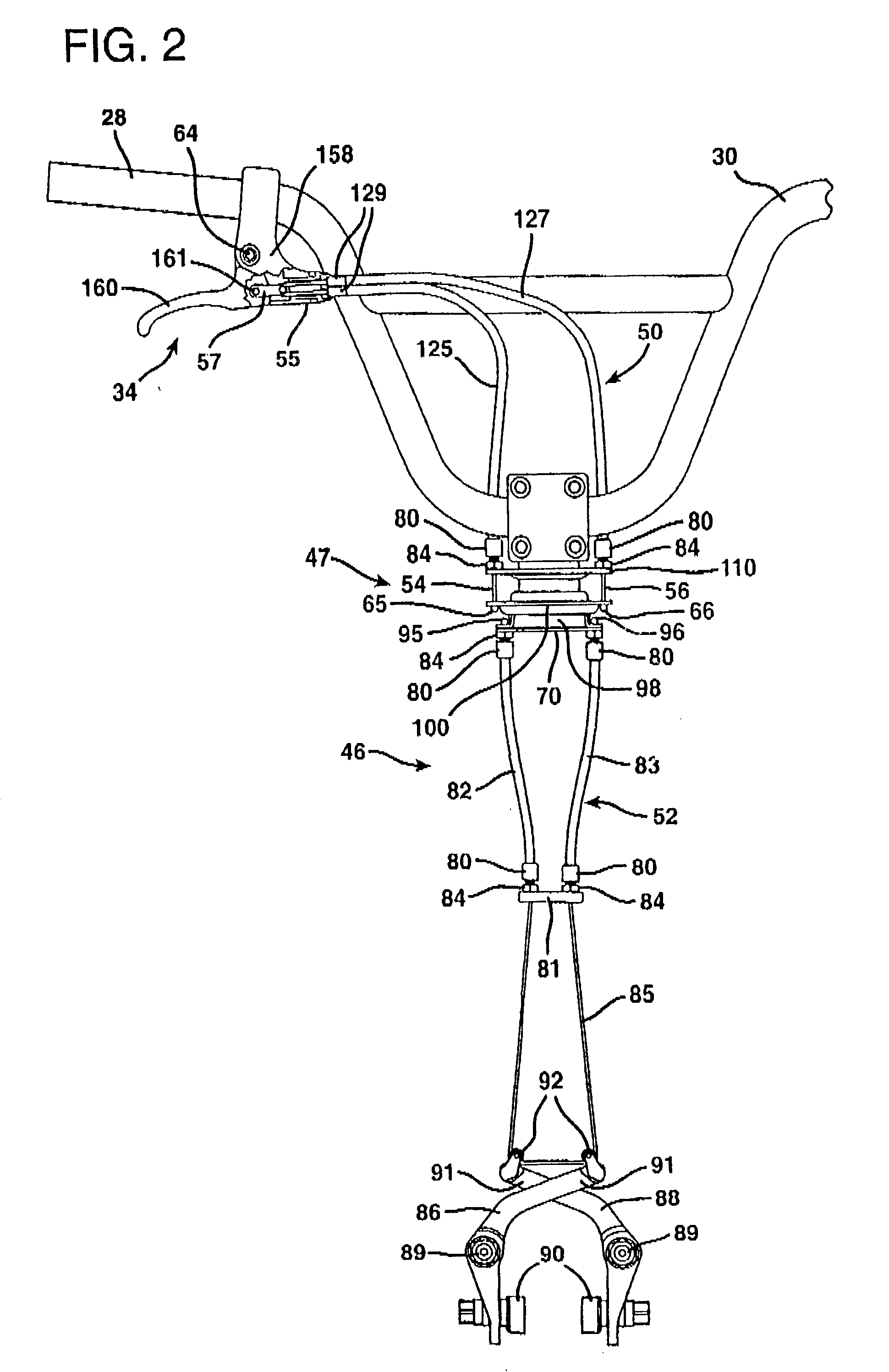Bicycle cable brake control line
a technology of brake control line and bicycle cable, which is applied in the direction of bicycle brakes, steering devices, cycle equipment, etc., can solve the problems of inability to manipulate, parts of the inextensible core to be pulled out, and inability to control the brak
- Summary
- Abstract
- Description
- Claims
- Application Information
AI Technical Summary
Benefits of technology
Problems solved by technology
Method used
Image
Examples
Embodiment Construction
[0039] FIG. 1 illustrates a bicycle 10 having the usual front wheel 12 and real wheel 14 which support a rigid, tubular steel or aluminum frame 16. The frame 16 is equipped with a hollow, cylindrical, annular bicycle frame head tube 18 at its forward end and a rear wheel fork 42 at its rear end.
[0040] The bicycle 10, like all bicycles, includes a front wheel steering assembly indicated generally at 20. The front wheel steering assembly 20 includes the front wheel 12, a front wheel fork 22, a steering tube 24, a handlebar stem 26, and a set of handlebars 28 and 30. The steering tube 24 is located atop the front wheel fork 22 and projects upwardly through the head tube 18 of the frame 16. The upper portion of the steering tube 24 that protrudes into the head tube 18 is captured within the grip of the stem 26. The stem 26 also carries the handle bars 28 and 30.
[0041] A rear wheel brake control 34 and a front wheel brake control 36 are respectively mounted on the handlebars 28 and 30 in...
PUM
 Login to View More
Login to View More Abstract
Description
Claims
Application Information
 Login to View More
Login to View More - R&D
- Intellectual Property
- Life Sciences
- Materials
- Tech Scout
- Unparalleled Data Quality
- Higher Quality Content
- 60% Fewer Hallucinations
Browse by: Latest US Patents, China's latest patents, Technical Efficacy Thesaurus, Application Domain, Technology Topic, Popular Technical Reports.
© 2025 PatSnap. All rights reserved.Legal|Privacy policy|Modern Slavery Act Transparency Statement|Sitemap|About US| Contact US: help@patsnap.com



